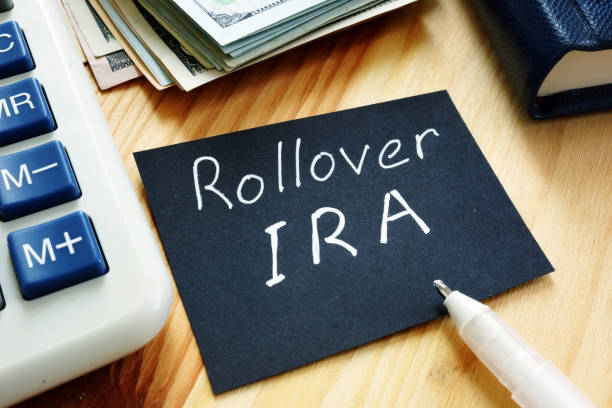Table of Contents
How to Transfer Your Retirement Savings to a Rollover IRA
If you have a 401 (k) or another employer-sponsored retirement plan, you may wonder what happens to your money when you leave your job. One option is to transfer your savings to a rollover IRA, which is an individual retirement account that allows you to keep the tax benefits of your retirement plan while giving you more control and flexibility over your investments. In this article, we will explain what a rollover IRA is, how it works, and what you need to know before you make the switch.
READ ALSO:
- How Insurance Premiums Are Calculated and What Impacts Them
- Insurance Claim: A Comprehensive Guide
- How Much Is Motorcycle Insurance
- American Express Travel Insurance: Protecting Your Adventures
- Get the Coverage You Need with Liberty Car Insurance
- Understanding Medical Insurance in California
What Is a Rollover IRA?
A rollover IRA is a type of IRA that is funded by transferring money from a previous employer’s retirement plan, such as a 401 (k), 403 (b), or profit-sharing plan. The purpose of a rollover IRA is to maintain the tax-deferred status of your retirement savings, which means you don’t pay taxes on your contributions or earnings until you withdraw them in retirement.
A rollover IRA is different from a traditional IRA, which is funded by your contributions, or a Roth IRA, which is funded by after-tax contributions. A rollover IRA can accept both pre-tax and after-tax money, depending on the source of your rollover. For example, if you roll over money from a traditional 401 (k), which is funded by pre-tax contributions, your rollover IRA will also be pre-tax. But if you roll over money from a Roth 401 (k), which is funded by after-tax contributions, your rollover IRA will also be after-tax.
How to Do a Rollover IRA
There are two ways to do a rollover IRA: a direct rollover or an indirect rollover. A direct rollover is when your former employer’s plan administrator transfers the money directly to your rollover IRA, without you ever touching it. This is the easiest and safest way to do a rollover IRA, as it avoids any taxes or penalties that may apply if you receive the money yourself.
An indirect rollover is when you receive a check or a cash distribution from your former employer’s plan, and then deposit it into your rollover IRA within 60 days. This method is riskier and more complicated, as you may have to pay taxes and penalties if you miss the deadline, or if you spend or invest any part of the money before rolling it over. Also, your former employer may withhold 20% of your distribution for federal income tax, which you will have to make up from your funds if you want to roll over the full amount.
To do a rollover IRA, you will need to open an account with a brokerage firm that offers IRAs. You will also need to contact your former employer’s plan administrator and request a rollover. You will have to fill out some forms and provide information about your rollover IRA account. You may also have to pay some fees or charges for the rollover, depending on your former employer’s plan rules.
Benefits of a Rollover IRA
There are several benefits of doing a rollover IRA, such as:
- You can keep the tax advantages of your retirement savings, and avoid paying taxes or penalties on your rollover amount.
- You can choose from a wider range of investment options, such as stocks, bonds, ETFs, and mutual funds, and customize your portfolio according to your risk tolerance and goals.
- You can consolidate your retirement accounts and simplify your record-keeping and tax filing.
- You can avoid the required minimum distributions (RMDs) that apply to most employer-sponsored plans when you turn 72, and defer your withdrawals until you need them.
- You can convert your rollover IRA to a Roth IRA, which offers tax-free growth and withdrawals if you meet the eligibility and income requirements.
Drawbacks of a Rollover IRA
There are also some drawbacks of doing a rollover IRA, such as:
- You may lose some of the benefits or protections that your former employer’s plan offered, such as lower fees, employer matching contributions, loan options, or creditor protection.
- You may have to pay higher fees or commissions for your rollover IRA account or investments, depending on your brokerage firm and the type of assets you choose.
- You may trigger taxes or penalties if you do an indirect rollover and fail to follow the rules or meet the deadline.
- You may limit your access to your money, as you will generally face a 10% penalty if you withdraw from your rollover IRA before age 59 1/2 unless you qualify for an exception.
Conclusion
A rollover IRA is a great way to keep your retirement savings growing and avoid taxes or penalties when you leave your job. However, it is not the only option, and it may not be the best option for everyone. Before you decide to do a rollover IRA, you should compare it with other alternatives, such as leaving your money in your former employer’s plan, transferring it to your new employer’s plan, or cashing it out. You should also consider your situation, such as your income, tax bracket, retirement goals, and investment preferences. You may want to consult a financial advisor or a tax professional to help you make the best decision for your future.
FREQUENTLY ASKED QUESTIONS:
What is the difference between a rollover IRA and a Traditional IRA or Roth IRA?
A rollover IRA is a type of IRA that is funded by transferring money from a previous employer’s retirement plan, such as a 401 (k), 403 (b), or profit-sharing plan. A Traditional IRA is a type of IRA that allows you to make pre-tax contributions and defer taxes on your earnings until retirement. A Roth IRA is a type of IRA that allows you to make after-tax contributions and enjoy tax-free withdrawals in retirement. You can choose to roll over your funds from one type of IRA to another, depending on your tax situation and preferences.
What are some advantages of rolling over an account?
Some advantages of rolling over an account are:
-
- You can keep the tax benefits of your retirement savings, and avoid paying taxes or penalties on your rollover amount.
- You can choose from a wider range of investment options, such as stocks, bonds, ETFs, and mutual funds, and customize your portfolio according to your risk tolerance and goals.
- You can consolidate your retirement accounts and simplify your record-keeping and tax filing.
- You can avoid the required minimum distributions (RMDs) that apply to most employer-sponsored plans when you turn 72, and defer your withdrawals until you need them.
- You can convert your rollover IRA to a Roth IRA, which offers tax-free growth and withdrawals if you meet the eligibility and income requirements.
Am I eligible to roll over funds?
You are eligible to rollover funds if you have access to a qualified retirement account, such as a 401 (k) or another IRA. Additionally, you need to follow specific rules and timelines to ensure a smooth rollover process. For example, you must be at least 59 1/2 years old to avoid the 10% penalty for early withdrawals. You must also complete the rollover within 60 days of receiving the funds from your former employer’s plan.
What are the contribution limits during a rollover?
The contribution limits for IRAs are $6,000 per year for 2023 ($7,000 if you are age 50 or older). These limits apply separately for each type of IRA. However, if you have both a traditional and a Roth IRA in the same year, the total amount of pre-tax contributions cannot exceed $19,500 ($26,000 if you are age 50 or older). The total amount of after-tax contributions cannot exceed $6,500 ($7,500 if you are age 50 or older).
What investment choices will I have?
You will have access to various investment choices when you open an account with a brokerage firm that offers IRAs. Depending on the type of assets you choose, such as stocks or bonds, they may have different levels of risk and return potential. You should consider your investment objectives, time horizon, risk tolerance, and diversification needs when selecting your investments.
Are there any fees?
There may be fees associated with opening an account with a brokerage firm that offers IRAs. These fees may include account maintenance fees, transaction fees, sales charges, commissions, load fees, redemption fees, transfer fees, etc. These fees vary depending on the type of account, the type of assets, the frequency of trading, etc. You should compare different brokerage firms and their fee structures before choosing one.
What’s the difference between a direct rollover and an indirect rollover?
A direct rollover is when your former employer’s plan administrator transfers the money directly to your rollover IRA account without involving any third parties. This is the easiest and safest way to do a rollover IRA as it avoids any taxes or penalties that may apply if you receive the money yourself. An indirect rollover is when you receive a check or cash distribution from your former employer’s plan plan administrator, and then deposit it into your rollover IRA within 60 days. This method is riskier and more complicated as it requires more steps from both parties. It also involves withholding taxes from up to 20% of your distribution. If you fail to deposit it into another eligible retirement account within 60 days, you may face taxes, and penalties, or even lose some or all of your money.












